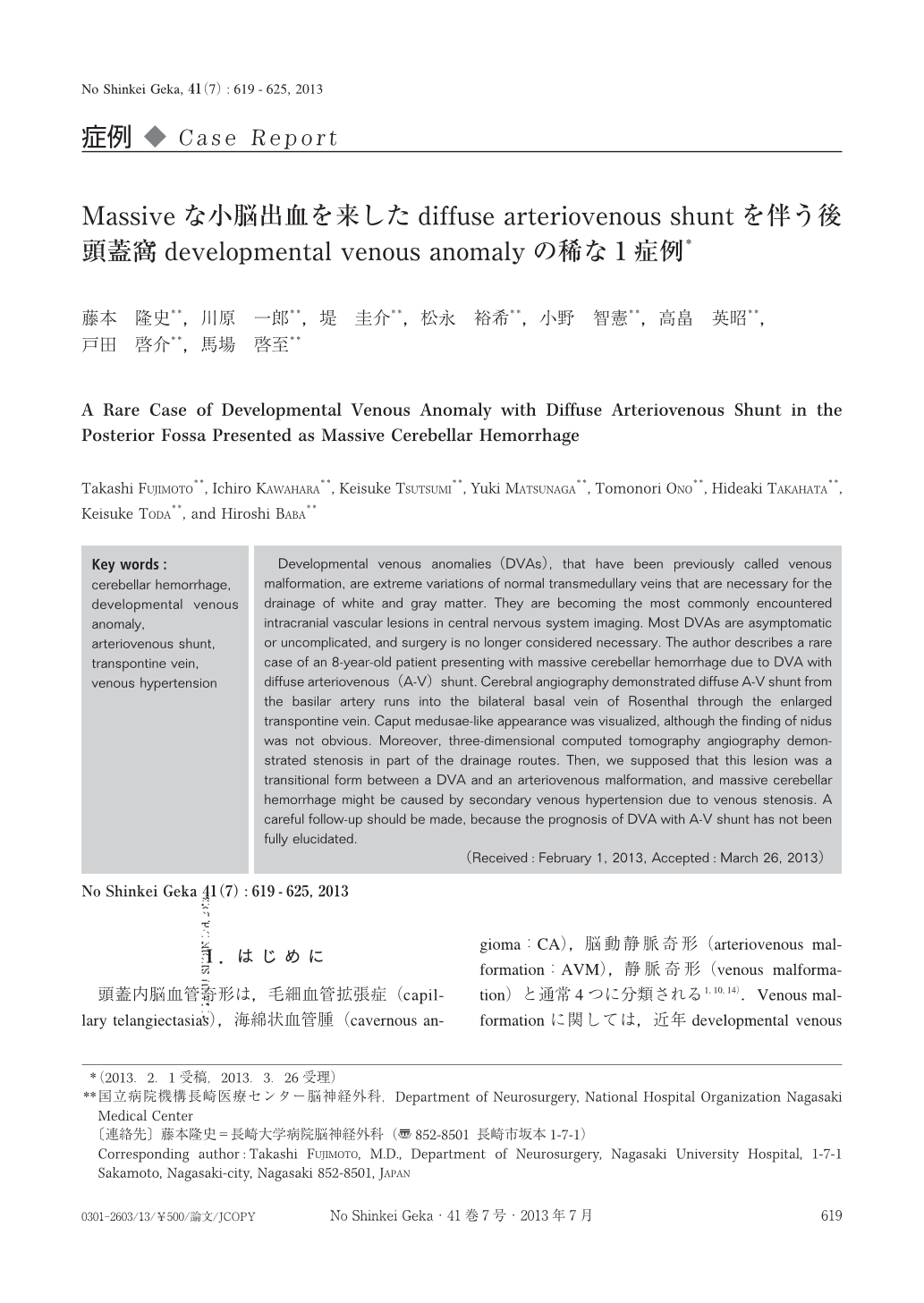Japanese
English
- 有料閲覧
- Abstract 文献概要
- 1ページ目 Look Inside
- 参考文献 Reference
Ⅰ.はじめに
頭蓋内脳血管奇形は,毛細血管拡張症(capillary telangiectasias),海綿状血管腫(cavernous angioma:CA),脳動静脈奇形(arteriovenous malformation:AVM),静脈奇形(venous malformation)と通常4つに分類される1,10,14).Venous malformationに関しては,近年developmental venous anomaly(DVA)との呼び名が使用されることが多く,以前は比較的稀な病変であると考えられていたが,magnetic resonance imaging(MRI)施行時などに偶然発見されることも多くなり,決して稀な病変ではないと言える.臨床的にはほとんどのものが無症状であり,一般的には頭蓋内出血の危険性は極めて低いと考えられている3,4,7,9,11).
今回われわれは,massiveな小脳出血を来したdiffuse arteriovenous(A-V)shuntを伴う後頭蓋窩DVAの症例を経験したので,文献的考察を加え報告する.
Developmental venous anomalies(DVAs), that have been previously called venous malformation, are extreme variations of normal transmedullary veins that are necessary for the drainage of white and gray matter. They are becoming the most commonly encountered intracranial vascular lesions in central nervous system imaging. Most DVAs are asymptomatic or uncomplicated, and surgery is no longer considered necessary. The author describes a rare case of an 8-year-old patient presenting with massive cerebellar hemorrhage due to DVA with diffuse arteriovenous(A-V)shunt. Cerebral angiography demonstrated diffuse A-V shunt from the basilar artery runs into the bilateral basal vein of Rosenthal through the enlarged transpontine vein. Caput medusae-like appearance was visualized, although the finding of nidus was not obvious. Moreover, three-dimensional computed tomography angiography demonstrated stenosis in part of the drainage routes. Then, we supposed that this lesion was a transitional form between a DVA and an arteriovenous malformation, and massive cerebellar hemorrhage might be caused by secondary venous hypertension due to venous stenosis. A careful follow-up should be made, because the prognosis of DVA with A-V shunt has not been fully elucidated.

Copyright © 2013, Igaku-Shoin Ltd. All rights reserved.


